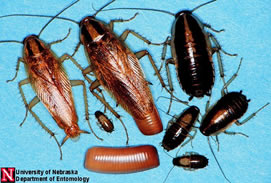 |
| German cockroach adults, nymphs, and egg case |
Photo Department of Entomology, |
German Cockroach
-
Scientific Name:
- Blatella germanica
-
Family:
- Blatellidae
-
Order:
- Blattodea (cockroaches)
-
U.S. Distribution:
- All states
This page has three tables, (1) Identification, (2) Look-alike Pests, and (3) Biology and Habits.
Identification
| Match the Shape and Size | Match the Color |
|---|---|
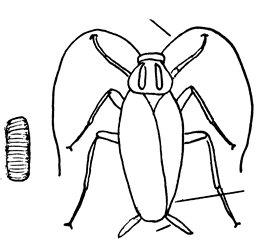 |
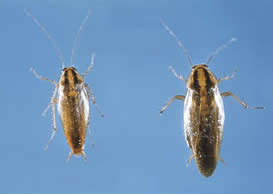 |
|
|
| Illustration © Pinto & Associates | Photo by CDC |
Look-alike Pests
| Look-alike Pest | Differences |
|---|---|
Brownbanded cockroach (Supella longipalpa) |
No dark bands on pronotal shield |
Asian cockroach (Blatella asahinai) |
Almost identical in appearance; flies readily; flies to lights, currently only in southeastern states |
Biology and Habits
| Match the Food and Site | Match the Habits and Damage |
|---|---|
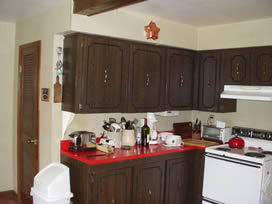 |
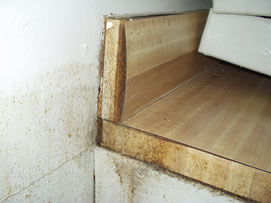 |
|
|
| Photo © Pinto & Associates | Photo © Pinto & Associates |